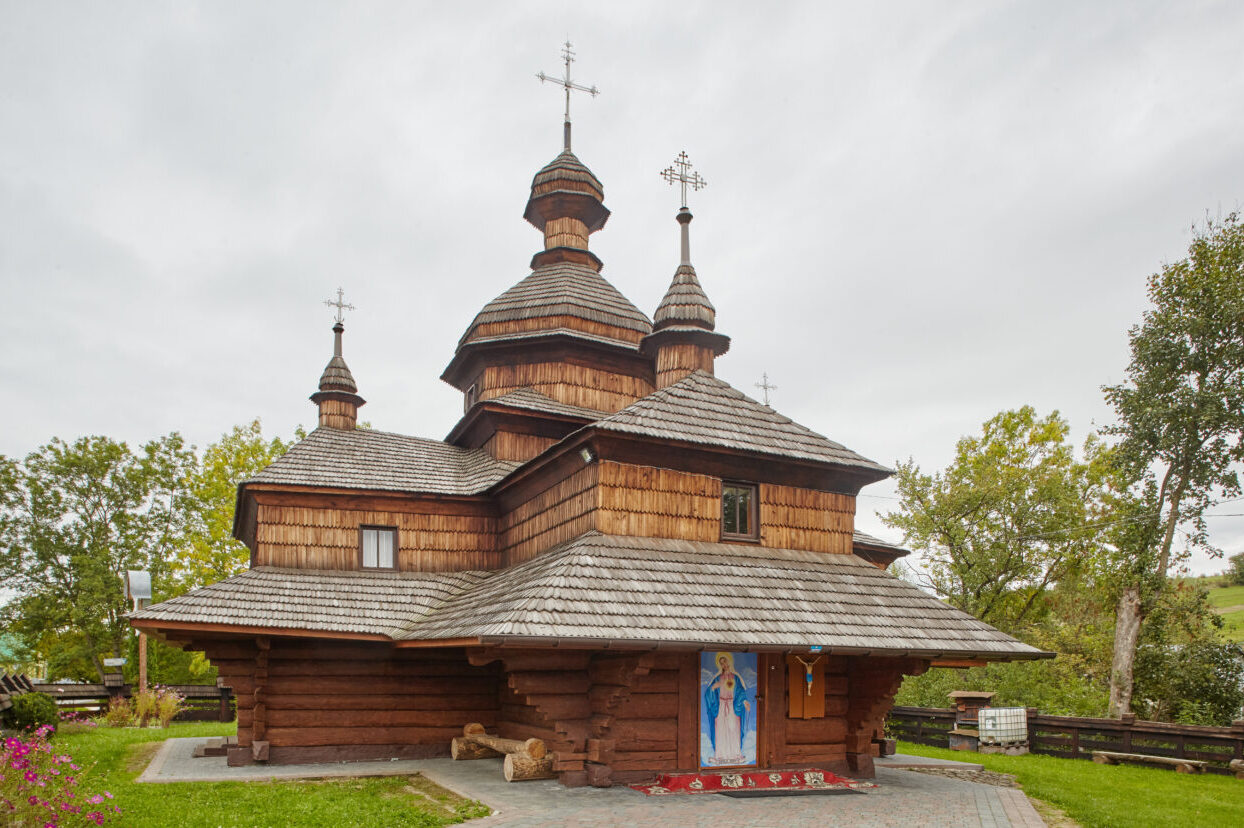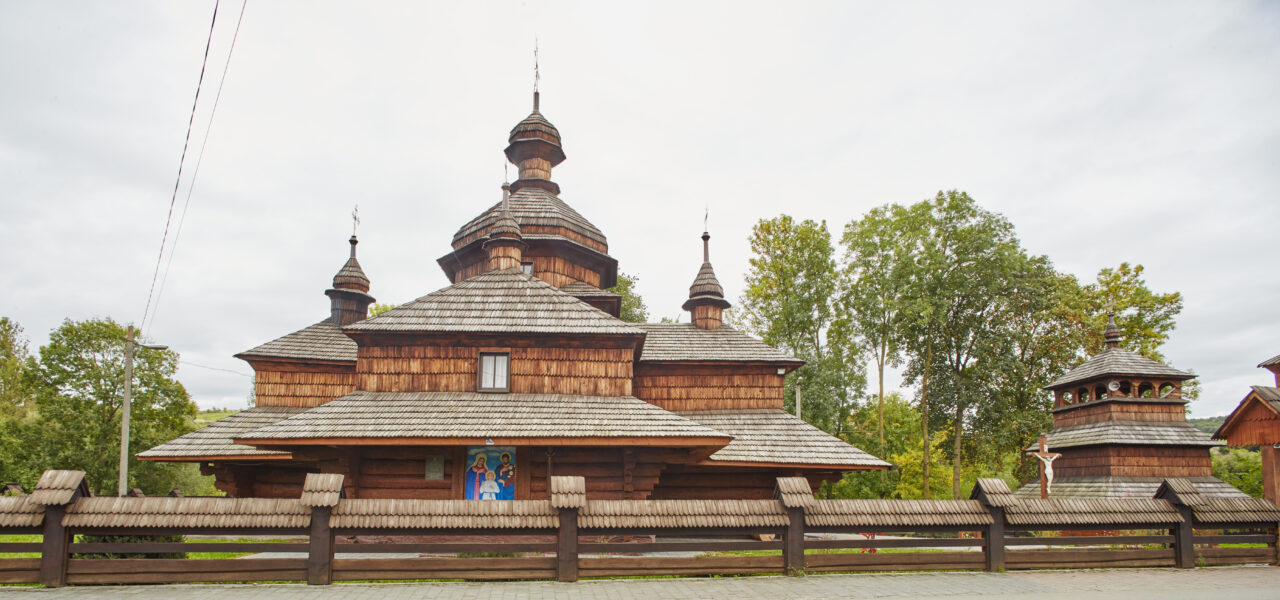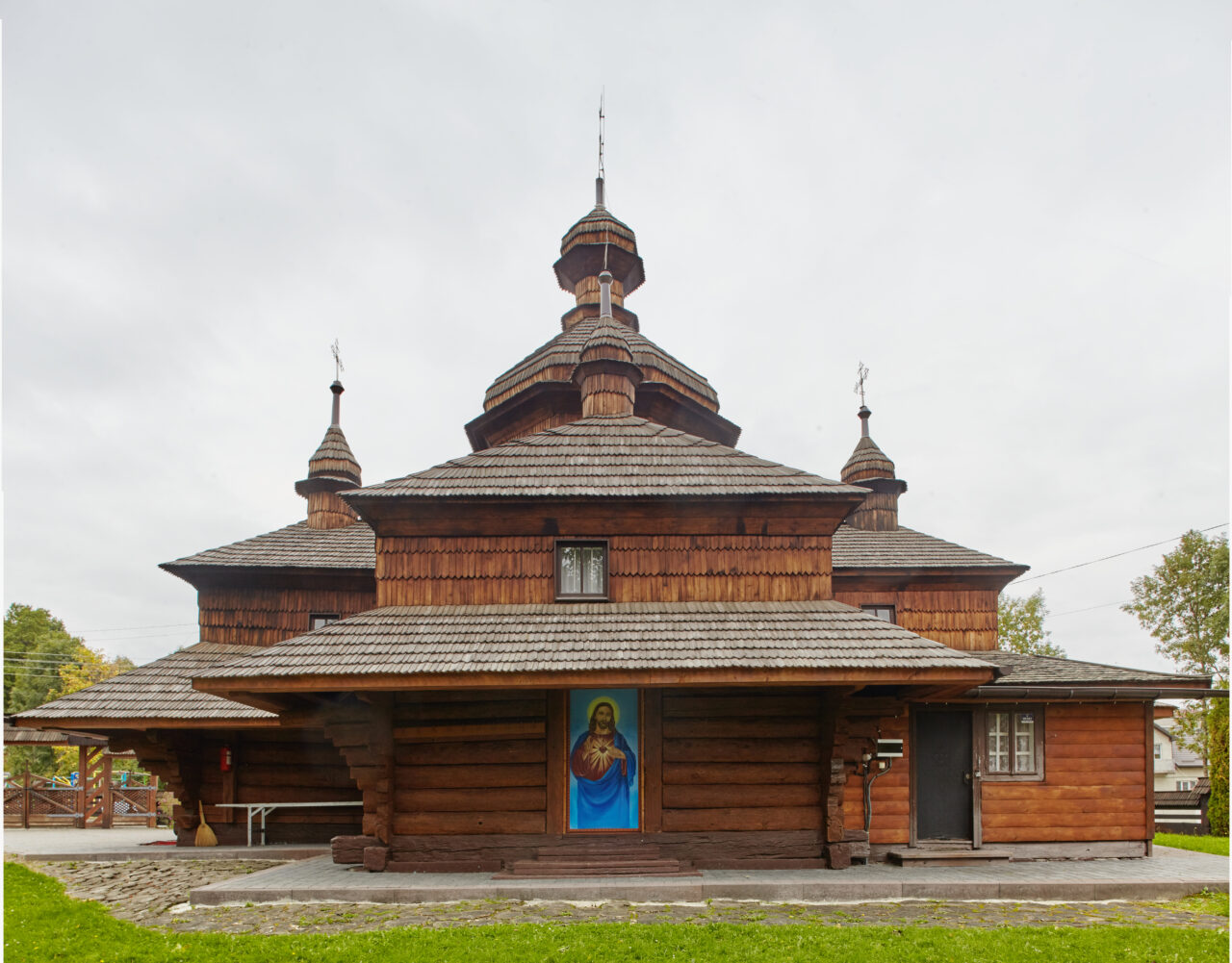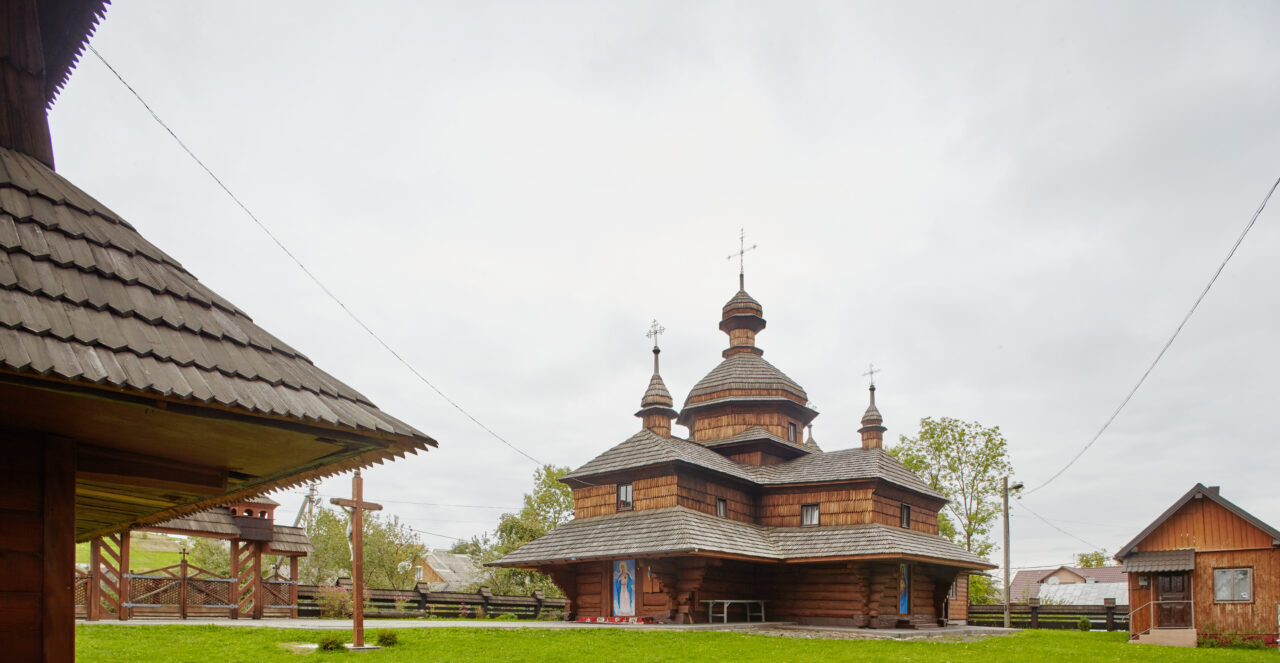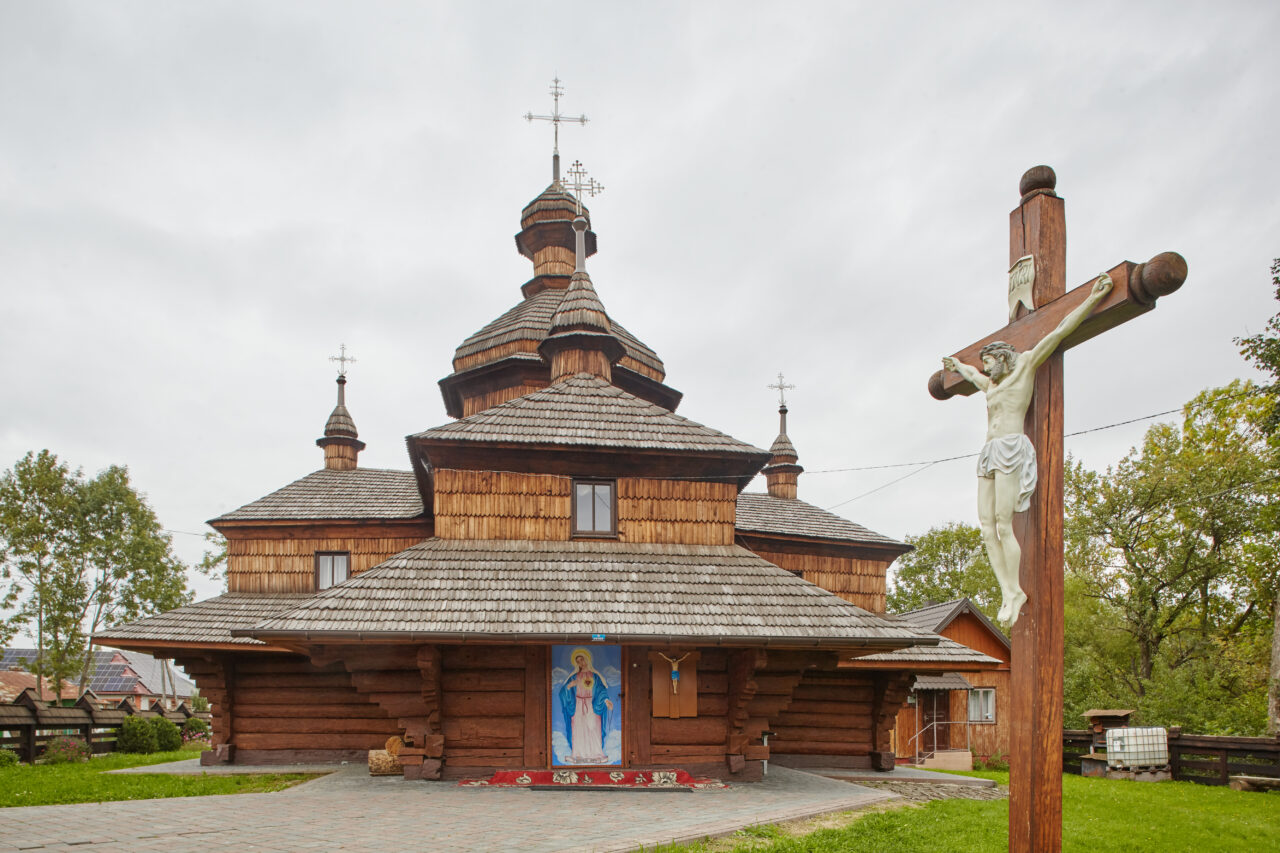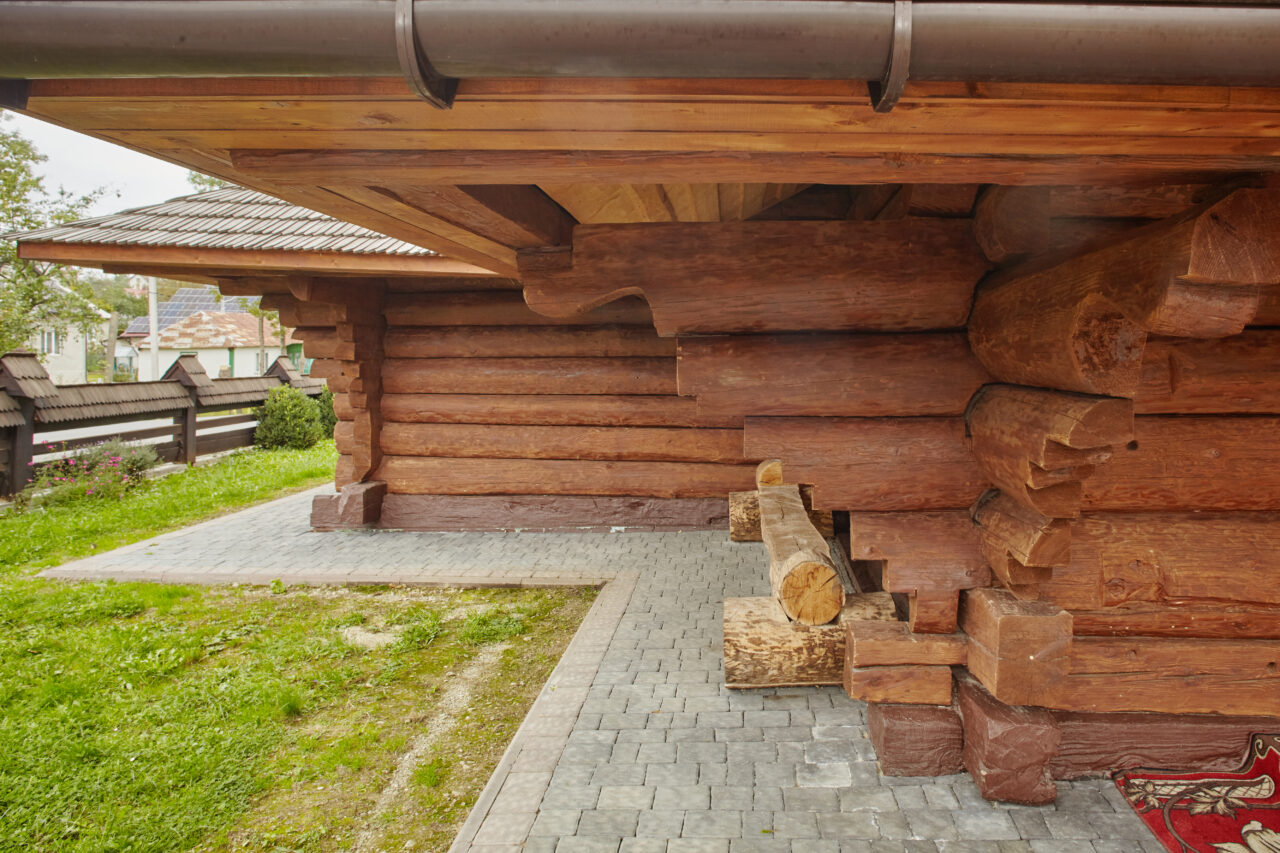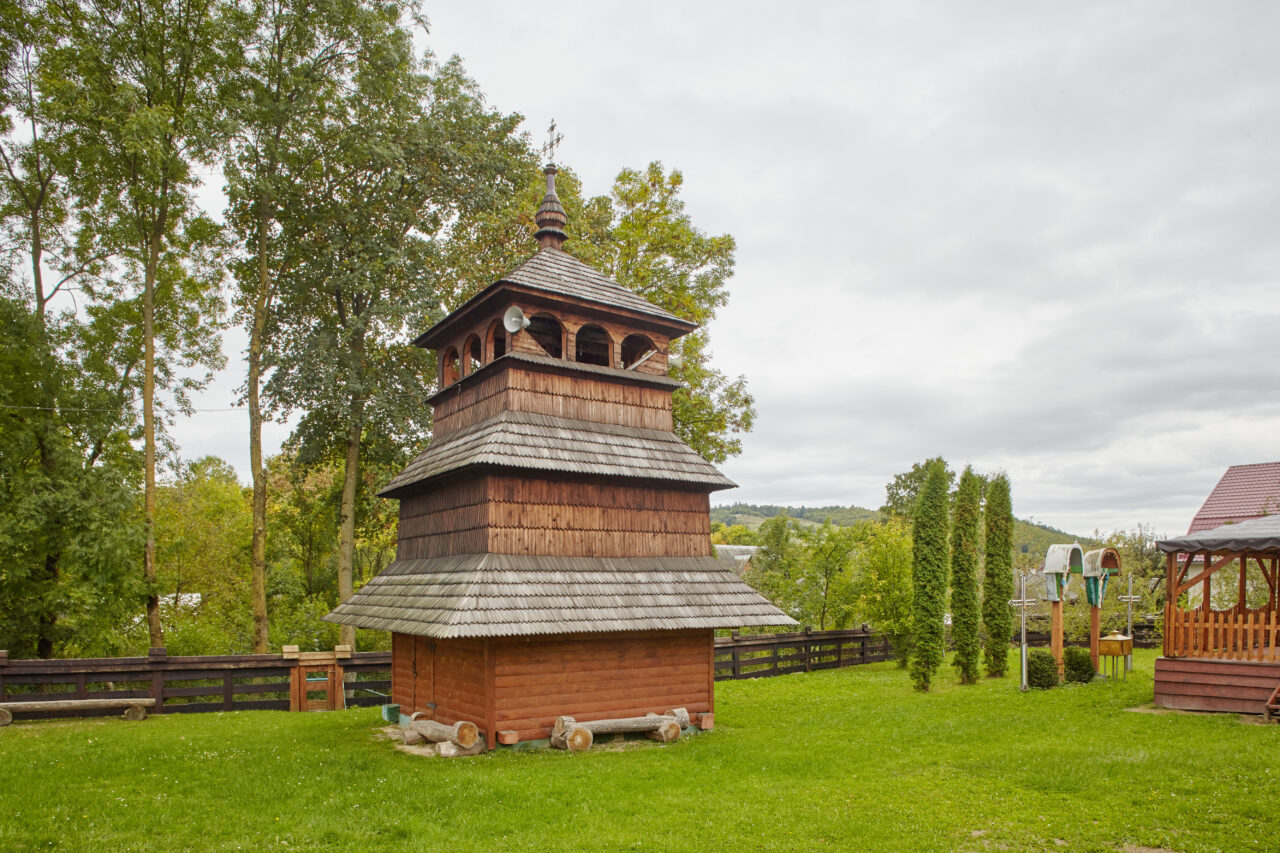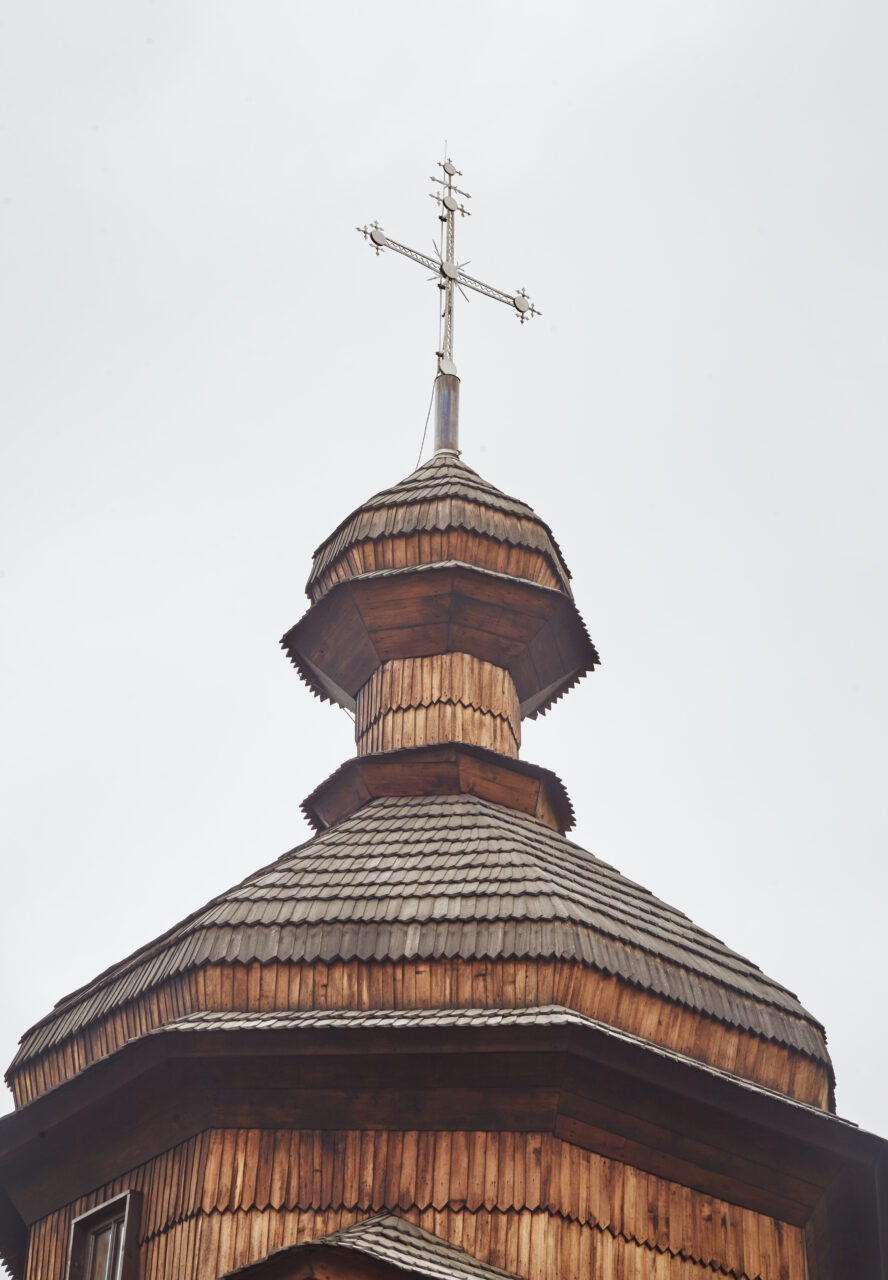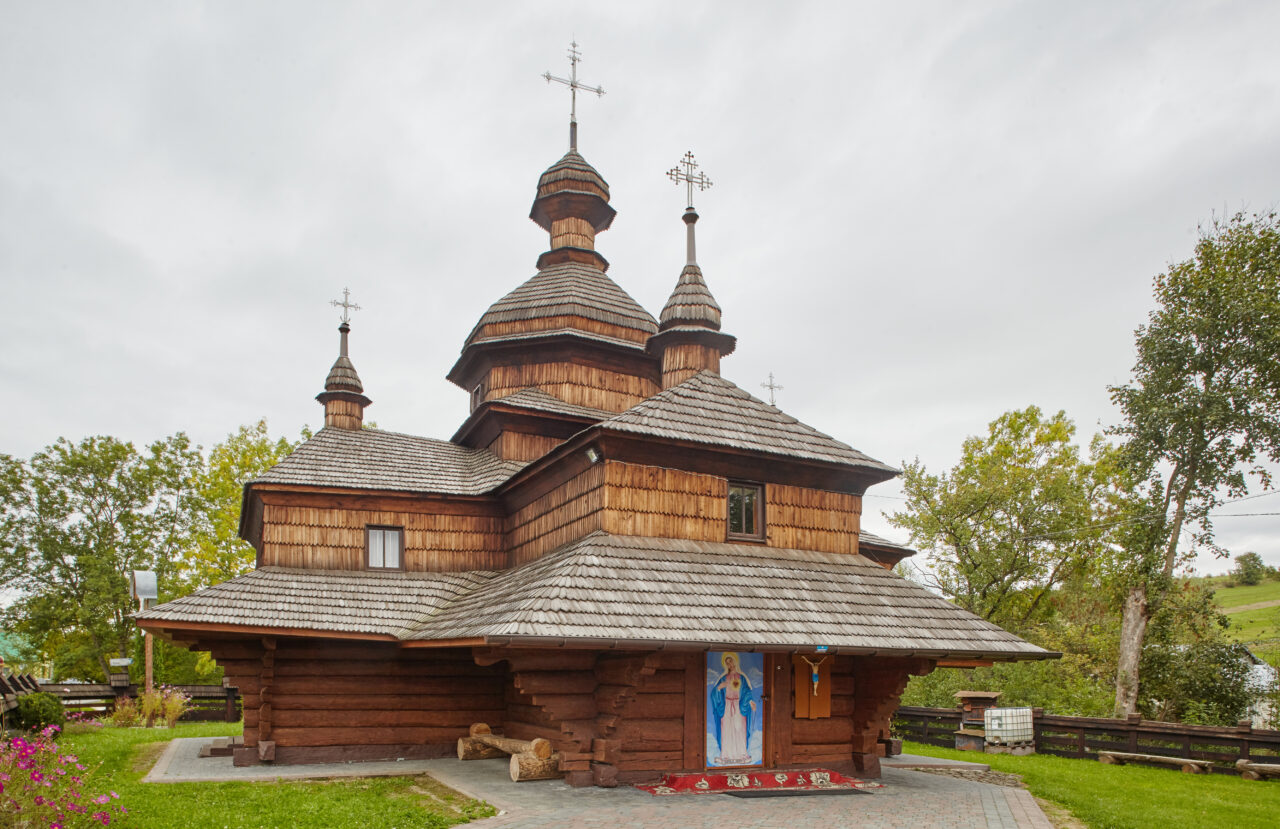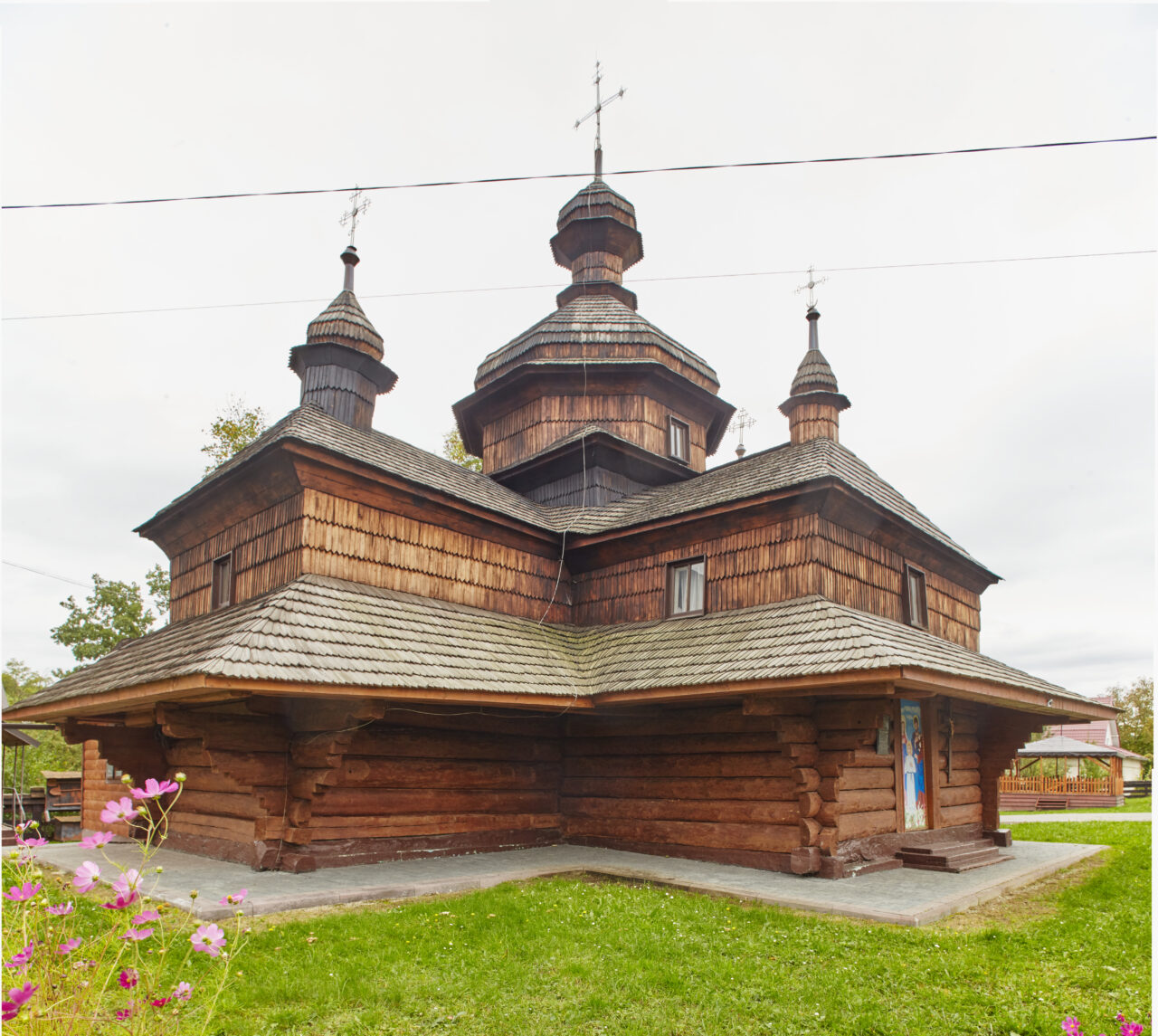The earliest mention of the local church comes from the Tax book of the Lviv Diocese in 1680. The shrine burned down after one of the Turkish-Tatar attacks in the 17th century. The church which is preserved today, was purchased in 1739 at the expenses of the Maniava Skete monks community, and it was moved to ‘Mohylky’ tract, and then, in 1793 (due to frequent flooding) to its present location.
It is a wooden cruciform single-story building with a square nave. The entrance door to the temple is completely painted with colored images on religious themes. There is a five-tiered iconostasis with openwork and embossed carvings. On the walls there is tempera painting of the 19th century.
In the 1960-1970s the village museum was housed in the church, and later the believers defended their right to use their church.
Thanks to the efforts of father I. Hedzyk the local community was persuaded to cover the shrine with a shingled roof (not tin). Shingle masters from Kosiv were invited for this purpose, so in 2017 restoration works were carried out: the top, roofs, attics and walls above the long terraces were covered with shingles.
Now the functioning church belongs to the Ukrainian Greek Catholic Church community.
It is an architectural monument of national importance.

